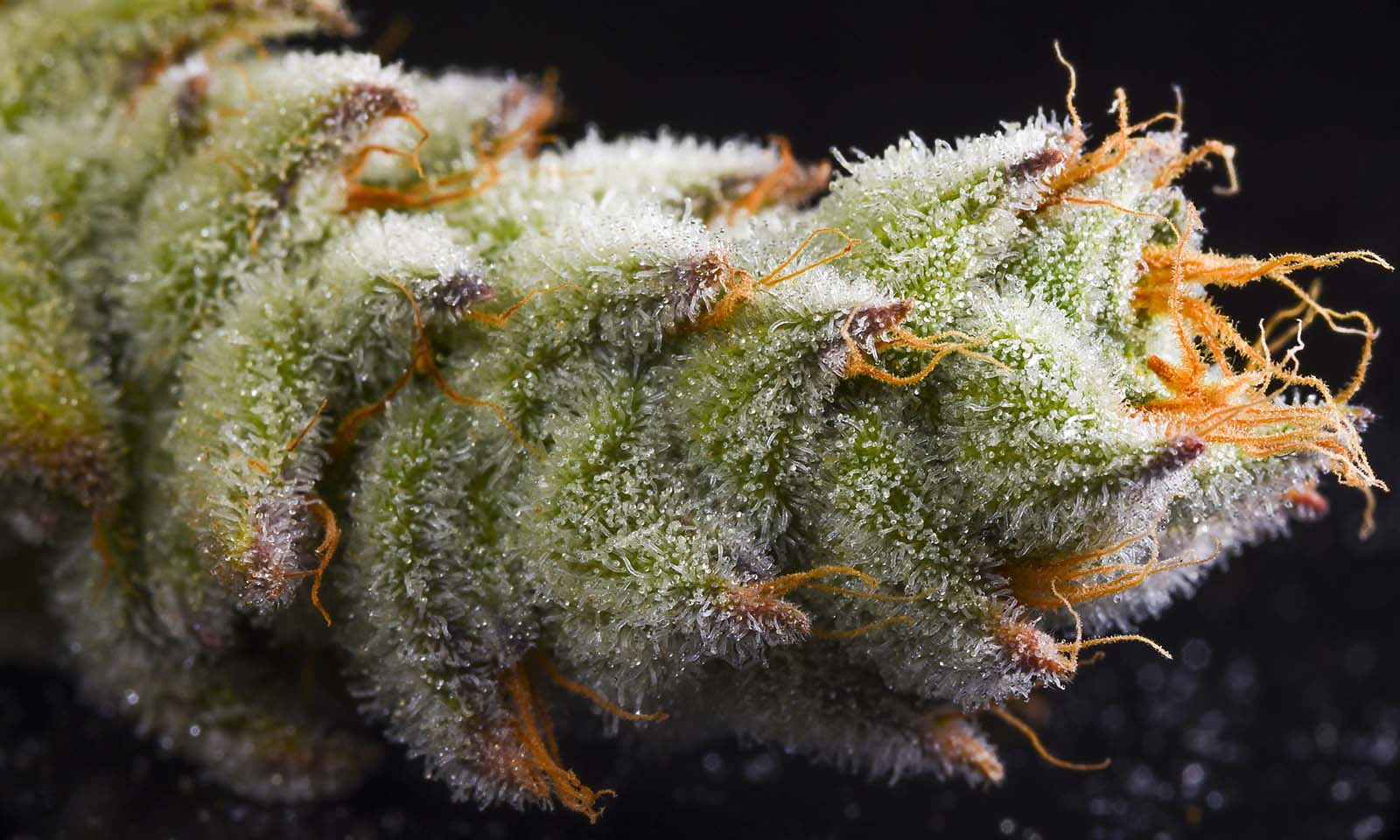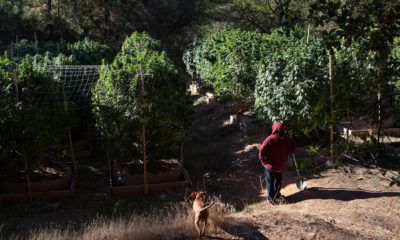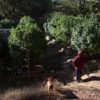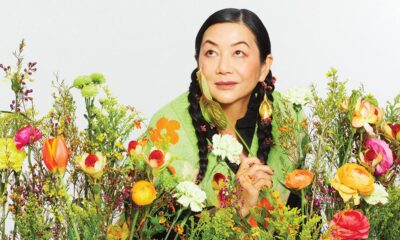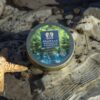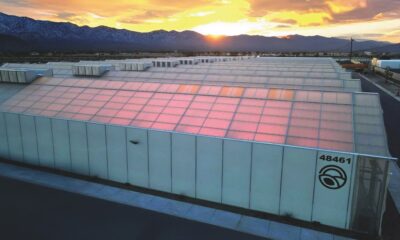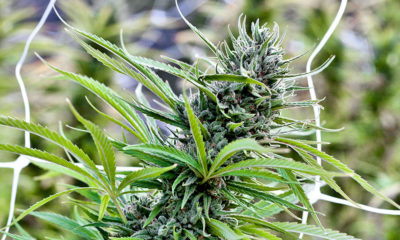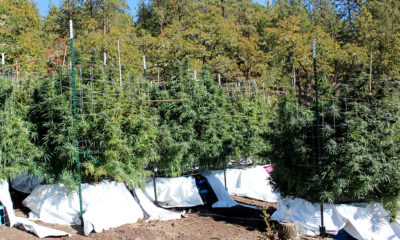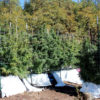Planting the Seed: The Complete History of the Jungle Boys
Ivan from the Jungle Boys describes his decades-long journey towards becoming one of the most respected cultivators in California.
Few names in cannabis are surrounded with as much hype as the Jungle Boys. However, because so much focus has gone to the amazing pot they’re producing, little time has been dedicated to learning the real backstory behind the top-shelf collective.
We had the chance to talk with the Jungle Boys’ founder Ivan about their earliest roots, their journey towards running the TLC Collective dispensary in Los Angeles in the midst of the Proposition D regulatory upheaval and the challenges of adjusting to California’s new adult-use market — plus the strain he says is generating the most hype today.
The Beginning of the Jungle Boys
Ivan says he started like any other cannabis enthusiast in his youth. He wasn’t incredibly dedicated yet, but he enjoyed smoking good cannabis and would occasionally read through High Times. At that point in life, he viewed cannabis consumption as more of a hobby than anything.
“You know I had a plant or two in my backyard,” Ivan told Cannabis Now. “My mom was actually the green thumb. She always had a cannabis plant in the backyard when I was younger and I didn’t really know what it was.”
When he got a bit older, Ivan said his mother started to help nurture his hobby a bit more. She was the one who taught him how to top plants to prevent any unwanted attention.
“It was the funniest thing. I had this big tall sativa in the yard. She was like, ‘Oh, it’s getting over the fence you got to cut the top of it.’ I said that sounds crazy, you’re not supposed to cut it,” Ivan said. “Looking back now, I was young then. I was a teenager and I’m 40 now.”
View this post on Instagram
Ivan said he was really becoming interested in cultivating as he got a bit older, but life was taking him on a different path. He was working on large-scale industrial buildouts, including for big-name companies such as FedEx when it expanded its SoCal operations.
During this time, Ivan’s dad was diagnosed with cancer.
“He had stage IV cancer,” Ivan said. “They caught it late and one of the doctors was like ‘Hey listen, you have stage IV cancer, it just becomes about living good.’ We had tried the radiation and the chemo and it just wasn’t working. The doctor said give cannabis a try.”
The doctor wasn’t even offering to write the recommendation himself, but just telling the family to look into it. Ivan recalled the limited options for his dad in those days, at that point in history when very few dispensaries had actually opened up shop.
Ivan looked into the situation. He got his own doctor’s recommendation to use medical marijuana and, to get the ball rolling, he got his first batch of medication for his dad from the Toluca Lake Collective, otherwise known as the TLC Collective. The edibles and flowers really helped his father, Ivan says. Ultimately, Ivan’s dad did pass away, but Ivan says the process of helping his father live the best life possible on his way out had helped reignite his enthusiasm for cannabis.
This new excitement came in the early 2000s, during the days when sketchy hydroponic stores and web forums were the premium source of information for anyone cultivating their own cannabis. Back then, a trip to the hydro store might mean switching cars, and of course, you couldn’t even mention anything to do with cannabis.
“You had to tell them you were growing tomatoes or they would kick you out,” Ivan said.
It was at this point that Ivan also got exposed to the concept of vending at dispensaries for the first time. He fired up a couple lights in the garage and began to dip his toes into what would become the cannabis industry, but back then it was still just a movement since you were a lot more likely to end up in handcuffs. Nevertheless, Ivan says, his first run of some now-mystery Bubba Kush cross came out exceptional.
Ivan continued to work full time outside of the cannabis industry while he fell deeper in love with growing pot. He was regularly putting in 14 to 16-hour workdays and he says he was getting a bit burnt out while his passion project flowered in the garage. But there were bills to pay as he was supporting his growing family. Soon, two lights turned to four, and then eight.
“I looked around and realized this was becoming something and every time I would take people my product they would buy it right up,” he says.
Nature’s Green Cure: Thriving in the Face of Prohibition & Corruption
The cultivation forums Ivan had visited online agreed with his presumptions of the changes coming to the game. Back then, online cultivation forums were the only place one could actually explore the thoughts of other cultivators on various issues. Ivan says that many of those cultivators are still his friends.
“That was the only way you could communicate with people,” Ivan says. “Still to this day, guys I know and met on there — like OG Raskal and Capulator — are still my friends. We came up through the ranks together and started in our garages. I remember getting my first warehouse and you couldn’t really post it online.”
In those days for Ivan and friends, the fear of having their IP address tracked was a big deal. The earliest online anonymity tools and tactics like the TOR network quickly became mainstays of people collaborating online in attempts to individually try and produce some of the best cannabis of the day. Ivan acquired above-average IT skills while learning he simply couldn’t put himself out there.
“At the end of the day, I made some really good connections and I met some really good people,” Ivan says. “We kind of bounced things off each other, like ‘Try this product,’ and this and that.”
About 13 years ago, Ivan’s new warehouse was also emerging in the Los Angeles scene, at the time the number of Los Angeles-area dispensary storefronts began to expand. So, Ivan began working with a couple of bigger shops. This included Downtown Patient Group, or DTBG, and the Toluca Lake Collective. He quickly realized vertical integration was where much of the business would be heading.
“I realized buying stuff off vendors was OK, but you couldn’t control everything,” Ivan said. “I felt in order to have the best products on the shelf and have the best concentrates you had to do it yourself.”
Ivan opened a dispensary called Nature’s Green Cure in Santa Fe Springs, California to test his theory. At the same time, he got in a bit deeper with the folks at the Toluca Lake Collective as a partner. In his view, Nature’s Green Cure was exceptionally progressive. While still in the cannabis dark ages, the NGC team reached out to police and municipal officials to ensure everything was above board. That sort of outreach was a very new idea at the time.
“We kind of had a cult following because people would come inside and we had a grow in the back,” Ivan said. “We didn’t show it, but people knew we had a grow back there. At that time we had a hundred lights. And a hundred lights was crazy.”
That NGC grow space was carved into five 20-light rooms. Ivan says the vision was always small craft rooms to produce small batches. This was also when the earliest incarnations of the large-scale seed propagation efforts that the Jungle Boys are now known for began.
An early find and still one of the most famous, Ivan’s WiFi #43 turned into one of the more popular cuts of the decade after Ivan popped a thousand seeds.
“Nobody did that. I was insane back then,” he said.
If you grow more than 100 plants, the sentences on the federal level can reach up to 40 years. However, Ivan took the risk and grew out ten times that in search of one phenotype. It proved to be a gem.
“I was so passionate about what I was doing. I believed it was for the right reasons,” Ivan said. “I’ll always remember when older patients and folks with disabilities would go inside [our dispensary]. We would really do our best to take care of these people.”
The team at NGC at this point had built a family of staff, patients and providers. But then, in the early 2010s, things took a turn for the worst.
In 2012, Santa Fe Springs City Councilman Joseph Serrano pled guilty to shaking down the dispensaries in town. Serrano had been a vocal opponent of Ivan’s efforts to provide medical cannabis with a business license and it turned out Serrano was on another dispensary’s payroll. That dispensary was working with the FBI and they monitored meetings where Serrano took over $10,000 in payouts from the informant dispensary. He demanded payments of $1,600 a month, which turned out to be the cost of his mortgage.
“The reason he worked against us was the longer he could prevent the shops trying to get business licenses from setting up, the longer the illegal shops could stay open,” Ivan said.
It became clear that Serrano was voting against legal cannabis to keep the marketplace in the gray area, which would make it easiest for him to continue his corruption scheme.
“He would just talk so much sh*t and call us drug dealers and low lives,” Ivan said. “I would just sit there thinking someone that feels this passionately about something is pretty scary. The feds ended up wiretapping his phone and finding out he was trying to get $20,000 out of someone. This is all public information now.”
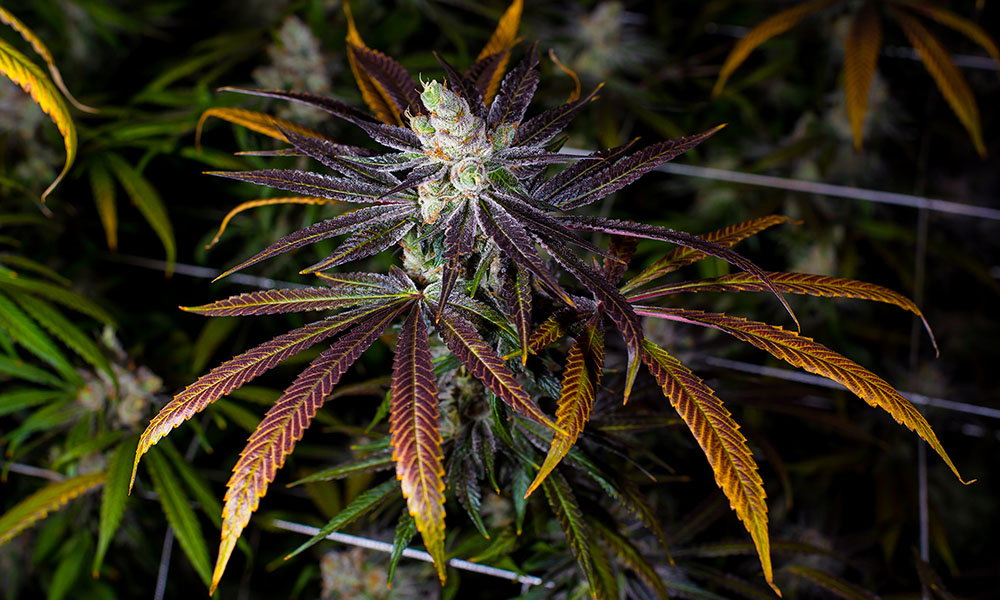
Photo Jared Delello
As Serrano’s activities heated things up for Santa Fe Springs operators, the first wave of the Department of Justice’s famous landlord letters made their way out across California, wherein the federal government threatened to send landlords to jail if they had any property being rented to a retail cannabis entity.
At that point, Ivan’s NGC had turned into a sizable operation. As to not risk their freedom and lives given the quantities of cannabis they were dealing with, the dispensary’s management team decided to shut down the storefront for a couple weeks to take the pulse of the situation. During this time, Ivan was still helping out in Toluca Lake and working a full-time regular job.
“I was sleep deprived, it was getting to me,” he said. “I realized at that point cannabis was my passion. I decided to quit my regular job and I did. I said to myself this is what I want to do whether or not it works out or not. I’m just going to gamble and put it all on red and take my whole entire life savings and really make a run at this and open up a shop in Los Angeles.”
13 Years in a Lawsuit Against the City of Los Angeles
So, Ivan took over the TLC Collective in Los Angeles in 2013 — the night before the city’s famous Proposition D passed, which granted limited immunity to the first 168 cannabis clubs that had opened in the city, essentially grandfathering them into hazy legality while the city sorted the rest of its cannabis policy out.
“If that law didn’t pass, TLC wasn’t worth anything,” Ivan said. “It would have been just like every other shop. We were really committed to it.”
At this time, TLC moved to 23rd Street in Los Angeles. This was also the beginning of their longtime lawsuit with the City of Los Angeles. For 13 years, the case stretched out as the city claimed the new TLC location was not compliant with city cannabis laws. However, Ivan had filed the proper permitting paperwork at a municipal satellite office of the city’s office of finance in Van Nuys, California.
“The office is there so residents don’t have to drive to downtown Los Angeles,” he said. “They took our paperwork, accepted it, stamped it and then send it to downtown.”
The city came back and said they could only file the paperwork downtown, despite it being already stamped and approved.
“We end up in court fighting them for 13 years,” Ivan said. “Back and forth, back and forth. We won the appellate, but it got overturned and went up to the next court. It just went on and on. Literally two weeks ago, it finally got dismissed.”
Ivan said that the craziest part was that after they had jumped through the hoops of the municipal and state licensing process to be able to stay open since January this year, there was still someone on the city’s staff who was trying to shut them down. Ivan says many of his most stressful days revolved around the case. He knew he was doing everything right, and as compliant as possible or beyond, but the pressure of the situation still weighed heavily on him.
During this prolonged drama playing out with the city, Ivan said he predicted that getting word he would be permitted would be “the best day of his life.”
“We have something special,” he says. “It’s a pretty amazing place and we’re proud of what we built.”
Adapting to California’s Adult-Use Cannabis Market
With everything finally squared away with the City of Los Angeles, the Jungle Boys and TLC now face the challenges of California’s adult-use cannabis market. Today, a staff of hundreds works to keep up with thousands of lights producing cannabis strains that are not necessarily the best-yielding phenotypes, but each batch is still magic. That quality makes it difficult for the Jungle Boys to keep the shelves stocked with their flower.
“We were already busy when we were medical, we just couldn’t keep up with the supply,” says Ivan. “Now we turned rec and medical, and now we’ve basically doubled our flower production. But we’ve also doubled the number of people that come through the door every day.”
A big bottleneck across the state is laboratory testing, affecting everyone, including the Jungle Boys. Currently, it takes weeks to get results back on a given product. Like many other producers, this bottleneck is regularly adding two weeks or longer into the Jungle Boys’ timeline of getting the flower to shelves. But once they get it out to testing, they feel comfortable pre-packing since they say that nothing is ever going to get denied.
“We’ve been testing like this for the past two or three years,” Ivan said. “We were ready to be tested, so we already know we’re good.”
Today, the Jungle Boys have two storefronts: TLC and the Los Angeles Farmers dispensary, located near the Staples Center. At any given point, these two cannabis retail stores stock between two and 10 of the Jungle Boys’ most popular cuts. Once the laboratory industry figures everything out a bit better, Ivan said they should have 20 different flavors available.
In order to grow more strains, the Jungle Boys are firing up new facilities on a weekly basis. All located in the confines of Los Angeles, as they’re sticking to what they know.
“We’ve been offered better deals with lower rent and lower electricity — but Los Angeles is just what we’re doing right now,” Ivan said. “For the most part, we’re staying in downtown LA.”
Another factor their storefronts are coping with is that many vendors who made the cut to get on TLC’s shelves back in the day are not around anymore. Ivan believes a lot of folks didn’t have faith that Prop 64 was going to pass, so they didn’t have their ducks in a row to mount a fight in the marketplace.
Another thing that surprised Ivan about many of those old vendors was their lack of an attempt to take part in Los Angeles’ social equity program, which is aiming to award business licenses directly to the communities hardest hit by cannabis prohibition.
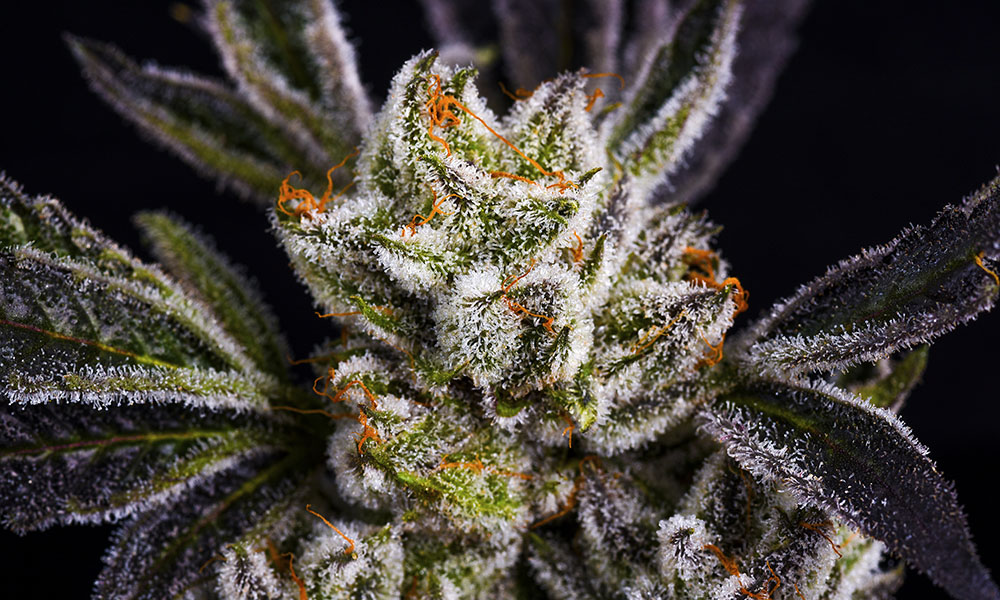
Strawberry Shortcake from the Jungle Boys (Photo Jared Delello)
Despite the production challenges that the Jungle Boys are currently facing, Ivan and the team don’t want to take in any outside capital. He said they don’t want to have to answer to anyone else’s throne.
“We’re one of the few companies that can say they are 100 percent family and friend owned,” Ivan said. “My daughter is the manager of TLC, my nephew runs cultivation for TLC and my wife runs Jungle Boys Clothing. So it feels good to know we never took on big money and we don’t owe anybody anything. The only person we owe every month is our landlord.”
Ivan says the following the Jungle Boys have built of people who enjoy top shelf flowers allows them to grow whatever they want. They can grow strains that may not produce high yields but have amazing profiles, and they don’t have to worry about a shareholders’ bottom line. The short-term turn and burns are not for them.
Other things about the adult-use market also worry Ivan, particularly the legal threat to breeders and their intellectual property now that many new faces hope to patent the strains of yesteryear and take legal action on anyone else producing them.
“I pheno-hunted somebody else’s seed that they bred, but I don’t own that strain,” he says. “I own the pheno that I found, but I don’t own the strain. Like who owns Blue Dream? You can claim that you own it, but where did that originally come from? You’re going to go trace down and try and sue some guy in Mendo that created the strain 20 years ago and say he can’t grow it?”
In their own battle with knockoffs, the Jungle Boys constantly work to remind folks where they can get the real thing, as opposed to attempting legal action against every imposter.
“At the end of the day, I always tell people, there are a few growers out there that day-in and day-out grow quality cannabis and do it on our scale,” he says.
At this point with so many facilities, Ivan says it’s a challenge in itself to be the one growing the best pot in-house, as each employee in the cultivation department is vying for bragging rights. Ivan says the newest item pushing hype on the team is the Wedding Pie strain, which is proving simply incredible. He wouldn’t say it was better than their Jungle Cake strain, but put it right at that level.
TELL US, have you ever smoked Jungle Boys cannabis before?



